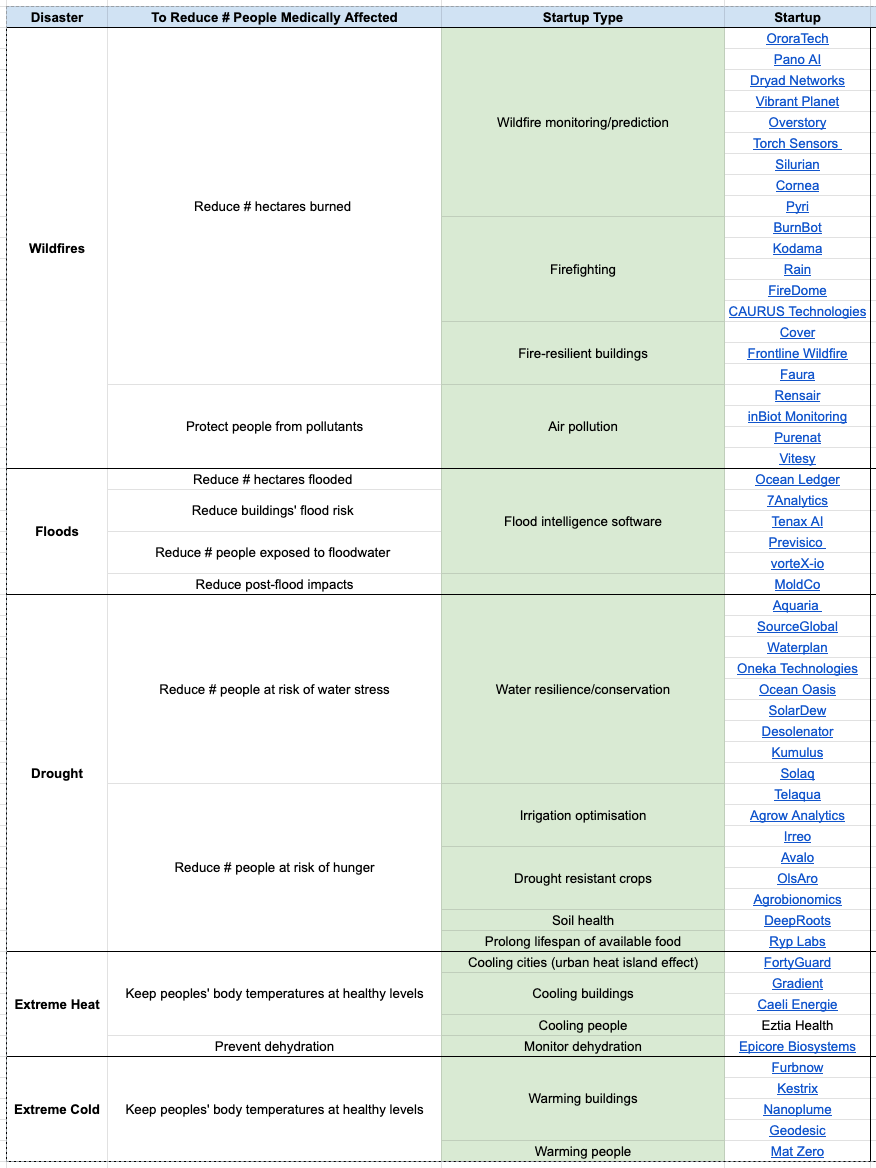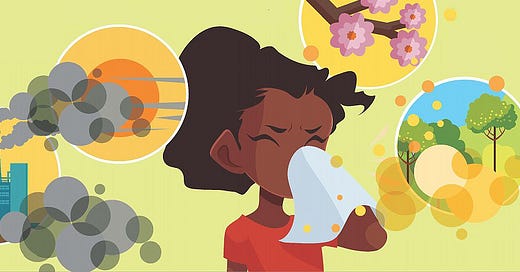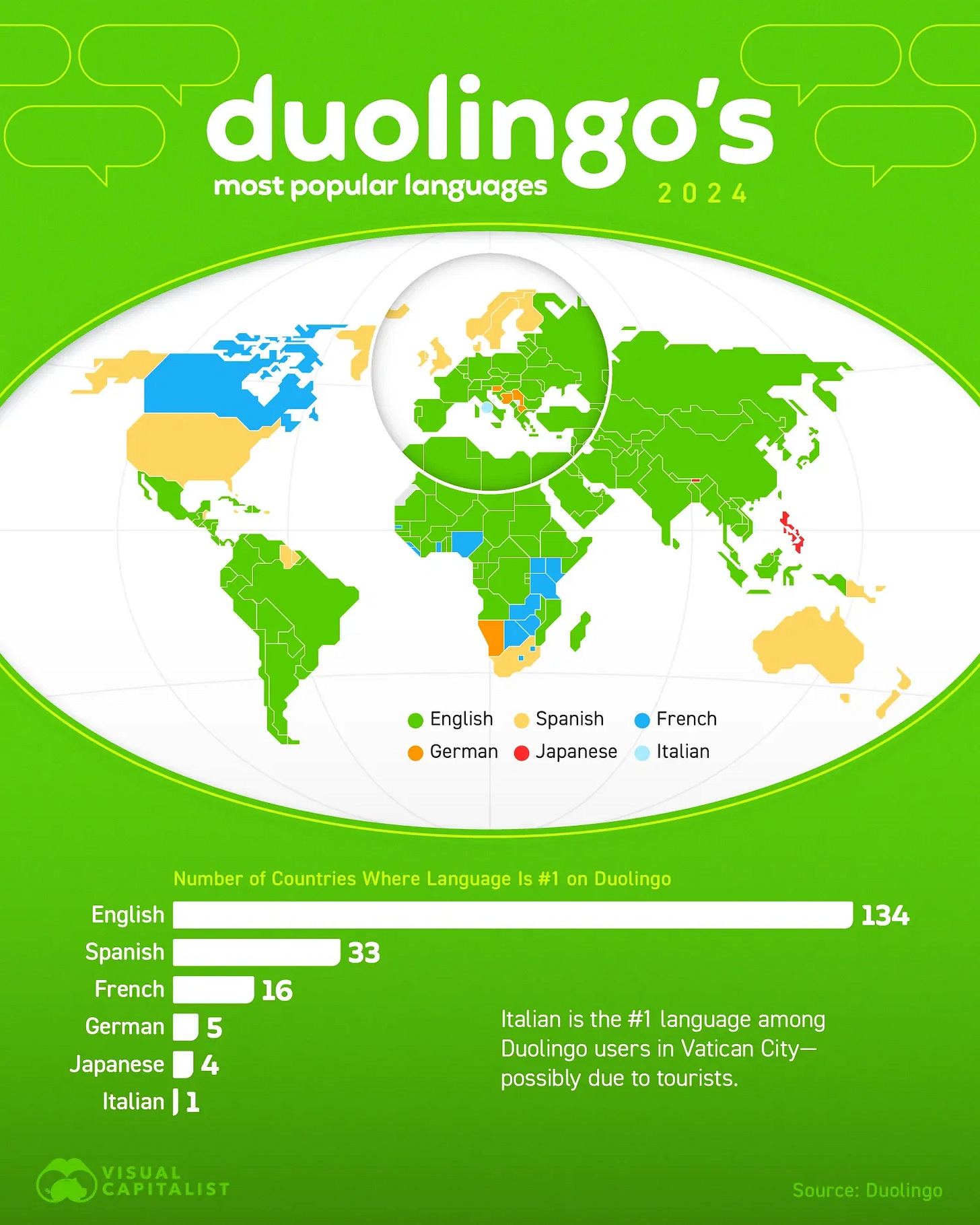Climate change is impacting people’s health. Peter, the climate solutions writer, and I have been thinking about this for a few weeks now, and are excited to publish our initial views and a market map outlining the state of play in Climate x Health.
The WHO estimates that there will be 15m excess deaths by 2050 as a result of climate change. We are already seeing widespread health & economic impacts from wildfires: European floods led to 1.5m displaced people in the Czech Republic last year, while the US’s Hurricane Helene destroyed a factory which was responsible for 60% of the country’s IV fluids, leading to surgery delays nationwide.
Adaptation technology can play a key role in the 1) detection, 2) mitigation, and 3) recovery efforts of climate perils.
I have written this article with input from Peter, and he has designed the market map below.
Read on 👇
The intersection of planetary and human health is bigger than we think 🗞️
A reminder of Eka’s investment themes… and exploring the intersection
We’re focussed on Consumer Health and Sustainable Consumption.
Consumer Health
Healthcare is a $10 trillion market that is almost entirely spent (c.95%) on treating people when they are sick rather than helping them stay well. This approach is leading to increasing chronic health conditions, rapidly rising costs and a 20 year inequality gap in healthy life expectancy.
The technology is now available to power a consumer led transformation of this system to a more preventative model. Making life essential products accessible, giving people tools to build healthy behaviours and diagnosing & treating conditions early.
This is simply a better approach to healthcare that can simultaneously improve health, stabilise costs and reduce health inequality. This consumer led approach to health is a defining social and economic opportunity of our generation.
Sustainable Consumption
Existing consumer supply chains: Linear, carbon-intense and opaque value chains supply our key consumer industries. They are responsible for c.65% of emissions, waste and biodiversity loss but unable to reduce this without a huge financial cost.
Sustainable Consumption: the application of AI, cloud, material science & intelligent design can enable circular supply chains powered by renewable energy. This new system will be capable of delivering better products at a lower cost with reduced emissions, waste and biodiversity loss.

While we treat the two themes as discrete, there is an interesting intersection where health becomes climate and climate becomes health. One example is our portfolio company Hived which is reducing inner city air pollution by enabling parcel delivery using electric vehicles.
It might not come as a big surprise to hear that transportation is the biggest cause of London's air pollution. Road vehicles produce nearly half of all nitrogen oxides and emit rubber and metal particles into the air we breathe.
According to this Centre for London report, freight and deliveries account for a quarter of London's total carbon emissions from transport. With the explosion in parcel volume due to the rise of e-commerce, the number of parcels delivered in London is expected to double by 2030. That means more vehicles, more local pollution, and, most critically, more CO₂ emissions. (Hived website)
What we mean when we talk about health and climate: perils, downstream impacts, and costs.
The financial impact of climate change on healthcare systems is huge. The WEF estimates that there will be 15m excess deaths, 1.6b additional years lived with disability, and $13tn of economic losses by 2050 as a result of a warming climate.
This represents not just an environmental crisis, but a health emergency which requires scalable solutions.
Climate events include floods, droughts, heat waves, tropical storms, and wildfires. Just looking at 2024:
💧 Floods were widespread across almost all major continents - about 841k people were displaced in Niger, and 1.5m people were affected in the Czech Republic in the summer floods.
🌵 Droughts in Southern Africa happened throughout the summer, with Zambia, Malawi, and Zimbabwe declaring states of disaster. Zambia faced its worst drought in at least two decades, devastating agriculture and threatening food security for millions. Also in the Southern Hemisphere, up to 1.3m people in South America were impacted by the drought’s impact on food supply.
🥵 Heatwaves across Europe led to the hottest summer on record (again?), leading to widespread health crises. The UK, for instance, reported nearly 3,000 excess deaths during heatwaves, predominantly among individuals over 65 in 2023. The UK is publishing its heat mortality data for 2024 later this week (3 April 2025).
⛈️ Tropical Storms: Hurricanes Helene and Milton in the United States each caused over $50 billion in damages, highlighting the escalating economic toll of such disasters. This includes a factory taken out by Hurricane Helene which made up 60% of the US’s IV fluids, where shortages led to cancelled surgeries.
🔥 Wildfires across Europe destroyed over 370,000 hectares of forest in the first nine months of 2024.
These have knock-on impacts on both human health and economic output. For example, wildfires lead to deforestation, which increases pollution (both short and long term), which can lead to respiratory diseases over time.
The LA wildfires are a high-profile example of how these mechanisms work in practice
Scientists are already setting up research projects to determine the long-term health impact of the LA wildfires. Harvard has launched the Los Angeles Fire Human Exposure and Long-Term Health Study in collaboration with UCLA, the Harvard School of Public Health, UCD, and the University of Texas.
While healthcare organizations have traditionally focused on treating climate-related illnesses reactively, evidence suggests that proactive investment in climate adaptation technology could significantly reduce these costs.
A 2025 World Economic Forum analysis estimated that by 2050, new interventions could potentially save up to one billion DALYs (disability adjusted life years) at an average R&D cost of $65 per prevented DALY. By comparison, the cost of averted DALYs for most health systems is estimated to range from $1,000 to $70,000. It’s a really wide range, and broadly correlates to HDI & LDI countries (see here for more information). The difference between the R&D cost and the averted DALY cost is equivalent to an 15x to 1000x ROI over the time period.
Health systems are encouraging a push towards preventative health more generally (see the UK’s DHSC note here). We encourage them to also take climate impacts into consideration as they shape up their thinking.
Make no mistake: the climate impacts on human health are costly, and set to grow
The WEF paper breaks this down into 11 disease areas: malaria, dengue, cholera, mental health disorders, stunting, hypertension, heart disease, injuries, heat-related illnesses, and asthma.
Investments in vaccines, medicines, medical devices, health tech, and climate-related health services could save 6.5 million lives, avert $5.8 trillion in losses, and prevent 1 billion disability-adjusted life years (DALYs).
Innovations from the life sciences sector focused on prevention, diagnosis, and treatment—especially in underserved and remote regions—can improve health outcomes, reduce premature mortality, and minimize long-term impacts, potentially avoiding up to 49% of climate-related DALYs.
The connection between climate events and health outcomes is well-established.
The Center for Disease Control found an increased risk of going into the Emergency Department (ED) for heat-related issues between May-September 2023.
A 2021 study on US ED visits showed that days of extreme heat (95th centile of local warm season) were associated with an 8% excess relative risk to the ED for any cause, 66% for heat related illnesses, and 8% for mental disorders.
In 2023, there were an estimated 2,295 deaths associated with the 5 periods of heat across the summer in the UK.
Adaptation technology as preventative health
Adaptation technology offers a preventative solution to these challenges. Early warning systems for wildfires can reduce smoke exposure by allowing for earlier evacuations and indoor air quality interventions.
Vitesy: smart air purifiers for the home
Pyri: early wildfire detection.
Eztia Health: wearables for cooling on the go.

For healthcare organizations looking to explore this opportunity, the path forward is clear: start with targeted pilot projects addressing climate risks most relevant to your specific patient populations, build partnerships with climate tech accelerators already active in this space, and meticulously track health outcomes and cost savings to build the business case for continued investment.
As climate impacts intensify, the question is not whether healthcare companies should invest in adaptation technology, but how quickly they can scale these investments to protect both their financial sustainability and the communities they serve.
Further reading for the curious 🧐
✍🏽 Week in Impact Articles
Monday: Womb for improvement
Tuesday: WHO releases Lancet papers that delve further into clinical trial guidance
Wednesday: First Therapy Chatbot Trial Yields Mental Health Benefits
Thursday: Ghibli x AI Reddit thread on copyright, creativity, and more
Friday: UK femtech startup Elvie acquired by US rival Willow
📊 3 Key Charts
1. Sprichst du eine andere Sprache?
2. What is (and isn’t) front of mind.
3. Generation, generation, generation
🗣️ Review of the Week
👋 Getting in Touch
If you’re looking for funding, you can get in touch here.
Don’t be shy, get in touch on LinkedIn or on our Website 🎉.
We are open to feedback: let us know what more you’d like to hear about 💪.










